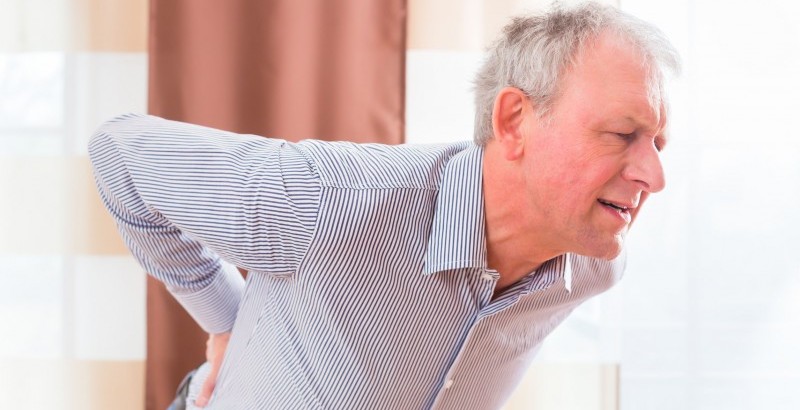5 Common Causes of Back Pain In Your 50s
Category: Back Pain | Author: Stefano Sinicropi

We’re reaching the midway point in our series on how back pain can affect you at all walks of life. We’ve already explained some of the more common causes of back pain in your 20s, 30s and 40s, and now we have our sights set on how back pain can cause problems in your 50s. Below, we take a closer look at some of the most common causes and risk factors of developing back pain in your 50s, and what you can do to treat and prevent it.
Common Causes Of Back Pain At 50
Here’s a look at some of the reasons why people in their 50s may begin to experience back pain flare-ups.
- Degenerative Disc Disease – As we mentioned in the blog on back pain in your 40s, degenerative disc disease will be on this list for all of the age groups we feature going forward because it is so common as we get older. This condition is caused by natural degeneration that we experience as our bodies are exposed to stress and pressure over decades of use. We can’t prevent this from happening, but we can help to slow down its progression by getting regular exercise and maintaining an ideal weight.
- The Idea Of Normalcy – One reason why so many people deal with chronic back pain in their 50s is because they mistakenly believe that back pain at this age is normal. While some degeneration like we talked about above is expected, it’s important to realize that back pain is never normal. If you assume that back pain is just a part of life, you’re much less likely to take tangible steps to combat it. By ignoring this back pain, it only tends to get worse because you keep doing the same things that led to back pain in the first place. In your 50s and beyond it’s important to know that back pain is not normal and you shouldn’t treat it as such.
- Spinal Stenosis – Spinal stenosis is a condition caused by the narrowing of the canal through which your spinal cord and other nerves pass through. If this canal narrows, key nerves can become impinged and cause pain or physical impairment. Like a number of back conditions at this age, spinal stenosis symptoms tend to respond well to targeted exercise, physical therapy and weight loss. Like degenerative disc disease, it may not reverse the condition, but it can help slow its progression and relieve symptoms to make movement more bearable.
- Spondylolisthesis – Spondylolisthesis is an issue that involves the slippage of one vertebrae onto the vertebrae below it. This can compress nerves or cause nerve crowding, both of which can lead to back pain. The good news is that caught early on, spondylolisthesis tends to respond well to conservative care options like rest, anti-inflammatory medications and targeted exercise techniques.
- Sciatica – One final condition that is common among people in their 50s is sciatica. Sciatica is a condition categorized by damage or compression of the sciatic nerve, the longest nerve in your body. It runs from your back all the way down your leg, and it can cause radiating discomfort and pain. Like a number of conditions on this list, it responds well to physical therapy, weight loss and anti-inflammatory medications. Surgery is also a possibility if conservative care fails to provide relief.
If you’re dealing with any of the above conditions, or you just want to understand why you’re dealing with back pain in your 50s, reach out to Dr. Sinicropi’s office today. Back pain at this age is not normal and oftentimes can be treated quite easily, so don’t delay. Reach out to a spine specialist near you today.